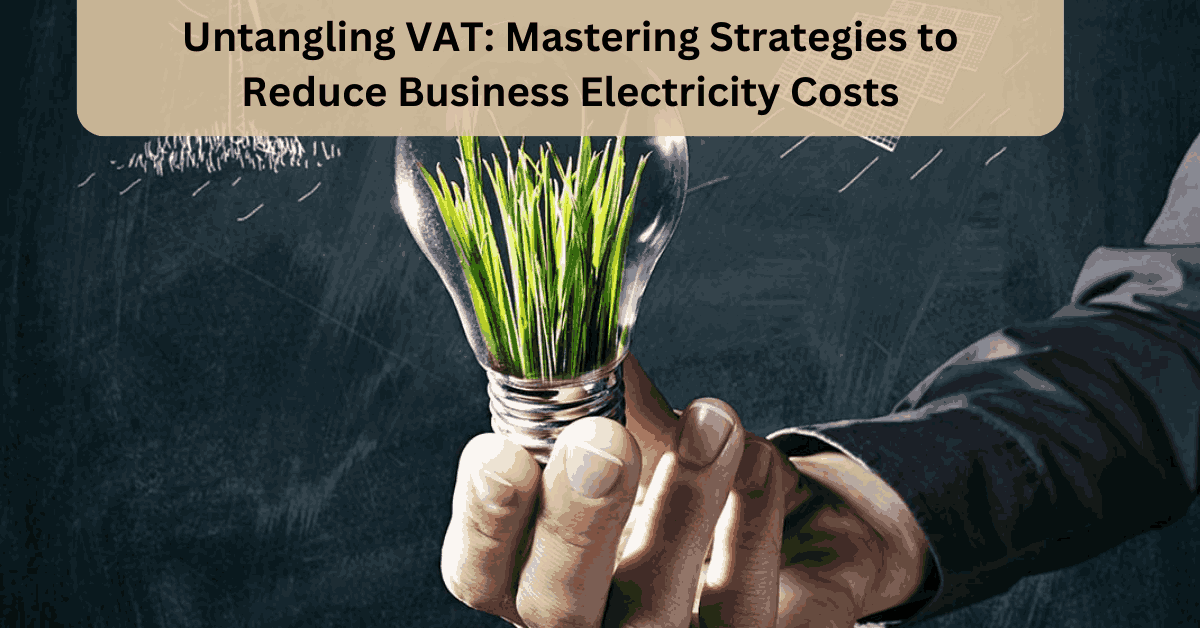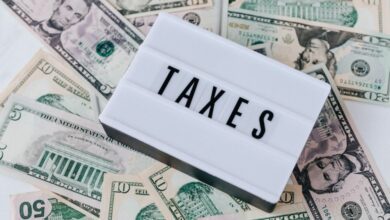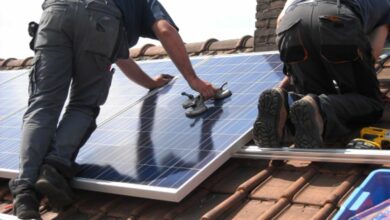Reducing your business energy usage is important not only to sustain the environment but also to save on electricity costs.
You need to understand how much vat your business pays on utilities to know just how much money you could be saving by switching business utility suppliers or finding a cheaper supply option that you can afford.
Discover practical strategies to reduce your business’s electricity costs and understand VAT implications on energy bills.
Understanding VAT on Your Business Energy Bill
Value Added Tax (AKA VAT) is the government levy that is charged on goods and services. Currently, the percentage of VAT is 20%.
But what does this mean for businesses? Businesses that make a turnover of over 拢85,000 must be registered for VAT by law. For businesses with a lesser turnover, registering is voluntary.
However, your business will pay VAT on energy regardless of whether they are registered for VAT or not. The 20% VAT is added to your energy and gas bill by your utility provider..
This VAT is non-returnable which means you cannot claim this percentage back on your tax as with other services.
There are ways that your business might qualify for a lower VAT percentage of 5%, but only if it meets the following criteria.
- 60% of the energy consumption is used for domestic purposes. It only applies if your business is registered as student accommodation, a care home facility, or a B&B. Caravans and campsites also count as domestic purposes and can qualify for this reduction.
- The business uses on average less than 33 kWh of electricity per day (1,000 kWh per month) and 145 kWh of gas per day (4,397 kWh per month).
- The business is registered as a non-profit organisation or is a charity.
If your business qualifies for a reduced VAT percentage, then it can also be exempted from having to pay the Climate Change Levy fee. This is a tax imposed by the government since 2001 to help businesses reduce their energy consumption and become more energy efficient.
The Climate Change Levy has two rates that it charges; these include the carbon price support rate and the main levy rate.
The Carbon Price Support Rate means you will pay this if you own an electricity station that is generating energy or if you are operating heat and power stations. For businesses paying the standard 20% VAT rate on business energy and gas, the main levy rate for the Climate Change Levy is charged at the same rate.
From April 1, 2023, the rate is charged at 0.775p per kWh (kilowatt hour) for electricity and 0.672p per kWh for gas.
Electricity Reducing Strategies
Here are some tips that you can follow to reduce business electricity costs.
Switch to LED lighting systems
- Switching out traditional light bulbs for LEDs will help your business save on energy consumption. Older light bulbs are not energy efficient and can be the reason why your energy bill is high.
- Also, be mindful of not leaving lights on when they are not being used. Reminding employees of switching off lights at their desks or in rooms once they are done will help reduce costs.
- In areas where natural lighting, such as the sun can be used during the day, the better it will be in cutting down expenses.
Use an Energy-Efficient Heating, Cooling and Ventilation System
Using an outdated heating, cooling and ventilation system will increase your energy bill and your business’s energy consumption.
Installing an energy-efficient thermostat and automating the heating and cooling settings will ensure that your HVAC system is not using more than the necessary amount of energy needed to function.
Set times by when you want the appliance to be on and off; this way, you do not need to worry about forgetting to switch off the HVAC system at the end of the day or over weekends.
Switching to Renewable Energy Sources
Installing solar panels and using other renewable energy sources can save your business money while not having to compromise on the amount of energy that you need to keep business operations running smoothly.
Conduct Energy Audit
Conducting an energy audit can show you which areas in the business need to cut down on their high energy consumption.
A professional auditor will also be able to advise you on how you can make changes in your business to conserve energy and which areas can be cut out completely to save.
Invest in Energy Saving Software
- Using energy-saving software, made possible through advanced technology, will allow you to set alarms to alert you to specific areas of the business when it uses too much energy.
- You can also install SMART appliances which will be able to track your energy usage and alert you to high energy consumption.
Install Energy Efficient Appliances
Using energy-efficient appliances and equipment will also help with lessening the amount of energy used throughout business operations.
Ensure that all appliances and equipment are not left on standby when not in use or its plug left in the wall socket, as this will still draw electricity that is not being us.
Ensure that workers also follow the energy-saving protocols put in place.
Insulate the Workplace Environment
Ensuring that the office space is insulated properly will prevent the energy from escaping the business. Check for faulty equipment and switch to opening windows on a hot day to allow the wind to blow through to avoid using the cooling system.
You can also check for any leaks, or gaps between the doors and windows so that no hot air is seeping out causing the thermostat to work twice as hard to heat up a cold space.
Conclusion
Understanding the VAT charged to your business and using the above-mentioned strategies to help reduce the costs of electricity will enable your business to save more.
By insulating your workspace, installing energy-efficient appliances, investing in energy-saving management software, conducting energy audits, switching to renewable energy sources and cutting out old light bulbs will ensure that your business becomes energy efficient.
Encourage employees to implement cost-saving energy reduction strategies to save energy and reduce the business carbon footprint.
You can encourage them to stay up to date with the latest tech developments and business processes by visiting https://usapridenetwork.com/







